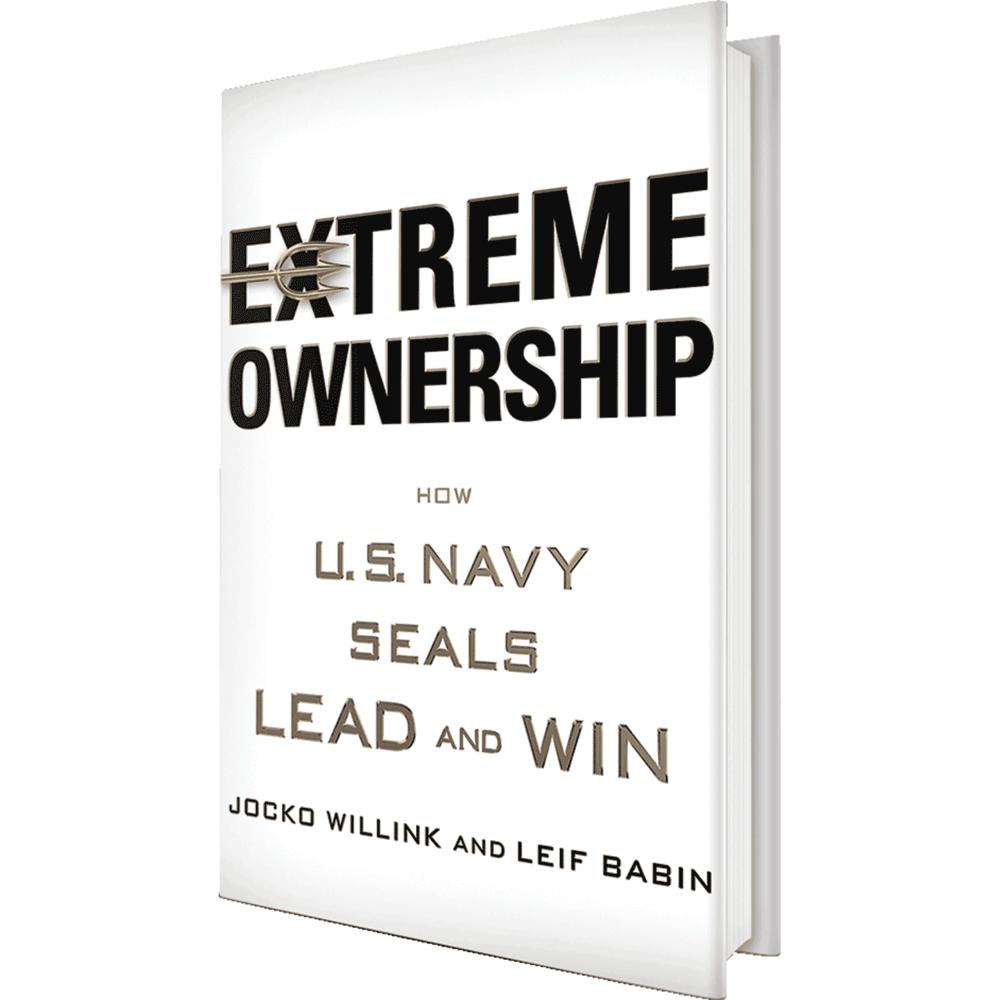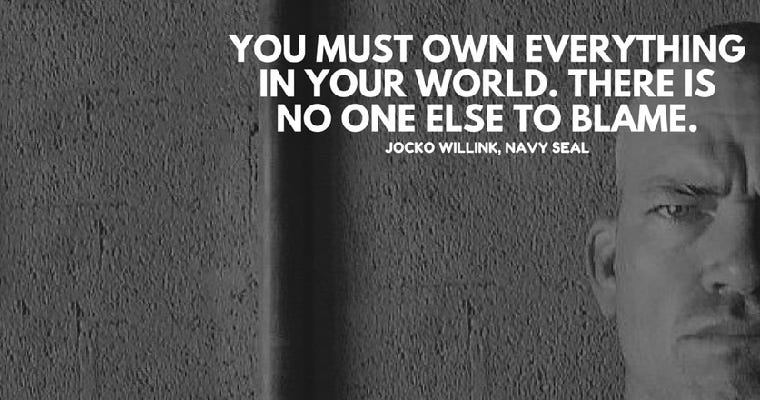How to Apply Extreme Ownership in Software Engineering Teams
It's not as extreme as it sounds - it's basically a framework to achieve incredible and consistent success.
For those without context on what “Extreme Ownership” is, - it’s a simple, powerful and “extremely” effective set of leadership principles. It comes from the book by the same name by Jocko Willink and Leif Babin - highly decorated U.S. Navy Seals. The authors through deep retrospection of their time while deployed in Iraq - what worked and what went wrong - have created a timeless masterpiece that has now cut across verticals and positively impacted several industries and influential leaders.
While we will not go into details of all the principles, here they are if you’re curious:
Extreme Ownership: Take full responsibility for everything in your sphere of influence.
There Are No Bad Teams, Only Bad Leaders: Team performance reflects leadership.
Believe: Fully understand and believe in the mission to communicate and execute effectively.
Check the Ego: Stay humble and focus on the mission, not personal pride.
Cover and Move: Prioritize teamwork and mutual support across all areas.
Keep It Simple: Simplify plans and instructions to ensure clarity and success.
Prioritize and Execute: Remain calm, identify critical tasks, and tackle them one at a time.
Decentralized Command: Empower junior leaders to make decisions within their roles.
Plan: Create clear, detailed plans with contingencies and team input.
Leading Up and Down the Chain of Command: Communicate effectively with both superiors and subordinates.
Discipline Equals Freedom: Maintain disciplined processes to create flexibility and adaptability.
While these 11 are the core tenets - it boils down to just one thing - You must own everything in your world. There is no one else to blame.
In this post, we will look at the roles in a typical software engineering team, and some key things they must adopt to absolutely race ahead of anyone else.
1. Software Engineers: From Code Ownership to Team Success
Software engineers form the bedrock of any engineering team. Their technical expertise transforms requirements into functional products. But where does Extreme Ownership manifest for them?
When a junior engineer says, "The requirements weren't clear," or a senior developer claims, "That bug wasn't in my module," they've abandoned ownership. What does ownership look like instead?
"On any team, in any organization, all responsibility for success and failure rests with the leader. The leader must own everything in his or her world. There is no one else to blame." - Jocko Willink
Ownership in Action
An ownership-minded engineer:
Treats unclear requirements as a problem to solve, not an excuse. They proactively seek clarification rather than building on assumptions.
Takes responsibility for integration failures even when "their code works fine". The system failing means their component failed, regardless of where the specific bug resides.
Views technical debt as their problem to address, not something to complain about or attribute to past decisions.
Owns the full development lifecycle rather than throwing code "over the wall" to QA.
Takes responsibility for their growth and learning. They don't blame management for lack of training or outdated tech stacks.
Consider this scenario: A production outage occurs at 2 AM. The engineer who owns this module receives the alert, but the root cause isn't in their code—it's in an adjacent service. The ownership-minded engineer doesn't just say "not my problem" and go back to sleep. They engage, support troubleshooting, and only stand down when the incident is resolved.
2. Tech Leads: The Crucial Translators
Tech leads bridge technical execution with strategic direction. They translate business needs into technical solutions while guiding engineering teams.
"Leaders must acknowledge mistakes and admit failures, take ownership of them, and develop a plan to win." - Leif Babin
Ownership in Action
A tech lead practicing Extreme Ownership:
Takes full responsibility for missed deadlines, even when individual engineers fall behind. They provided inadequate oversight or failed to raise risks early enough.
Owns the technical growth of their entire team, not just standout performers.
Takes responsibility for technical decisions that don't pan out. They don't deflect with "the team agreed" or "we followed best practices."
Accepts responsibility for quality issues, even when they occur in areas they haven't personally reviewed.
Owns communication failures between product and engineering. They are the bridge—if information doesn't cross it effectively, they own that failure.
When architecture decisions lead to implementation challenges, the ownership-minded tech lead doesn't blame the constraints or the team's capabilities. They acknowledge the misjudgment and adjust the approach.
3. Engineering Managers: The Force Multipliers
Engineering managers balance people development, delivery excellence, and organizational alignment. Their ownership mindset makes or breaks team culture.
"There are no bad teams, only bad leaders." - Jocko Willink
Ownership in Action
An engineering manager embracing Extreme Ownership:
Takes responsibility for team attrition. They don't blame market conditions or HR policies when talent leaves.
Owns all delivery failures, even when senior leadership set unrealistic timelines or other teams created dependencies.
Takes responsibility for team conflicts rather than attributing them to personality clashes or "difficult individuals."
Owns the entire engineering process, including handoffs to adjacent teams. They don't complain about product management, design, or operations.
Takes responsibility for overcommitment rather than blaming pressure from leadership or stakeholders.
When stakeholders express dissatisfaction with team performance, the ownership-minded manager doesn't defend or explain. They acknowledge the gap, take responsibility, and outline their plan to address it.
4. Product Managers: The Outcome Owners
Product managers convert market opportunities into valuable features. Their ownership extends from conception through delivery and market response.
Ownership in Action
A product manager practicing Extreme Ownership:
Takes responsibility for features that fail to meet user needs rather than blaming poor execution or misinterpretation by engineering.
Owns unclear requirements instead of claiming engineers should have asked more questions.
Takes responsibility for scope creep rather than pointing to changing market conditions or competitor moves.
Owns prioritization conflicts instead of attributing them to conflicting stakeholder demands.
Takes responsibility for product-market fit failures rather than blaming market research or user feedback.
When a feature receives poor user adoption, the ownership-minded product manager doesn't blame marketing, user education, or implementation details. They acknowledge their misjudgment of user needs and leverage the learning for future decisions.
5. QA Engineers: The Quality Advocates
QA engineers ensure that software meets quality standards before reaching users. Their ownership perspective transforms quality from a gate to a shared responsibility.
Ownership in Action
A QA engineer practicing Extreme Ownership:
Takes responsibility for bugs that reach production, even when they weren't assigned to test that specific feature.
Owns test coverage gaps rather than claiming developers should have written better unit tests.
Takes responsibility for automating repetitive tests rather than complaining about manual testing burden.
Owns the effectiveness of test processes instead of blaming flaky tests or unreliable environments.
Takes responsibility for quality communication rather than claiming "I reported that bug but no one fixed it."
When a critical bug reaches users, the ownership-minded QA engineer doesn't point to the rushed timeline or inadequate test environment. They acknowledge the failure in their quality verification process and improve their approach.
6. DevOps Engineers: The Infrastructure Guardians
DevOps engineers build and maintain the systems that support software development and deployment. Their ownership mentality ensures reliable infrastructure for the entire engineering organization.
Ownership in Action
A DevOps engineer practicing Extreme Ownership:
Takes responsibility for deployment failures rather than blaming developers for not testing in staging.
Owns system reliability instead of attributing outages to unexpected traffic spikes or third-party failures.
Takes responsibility for security vulnerabilities rather than claiming developers should have followed security best practices.
Owns the developer experience instead of expecting engineers to navigate complex deployment processes.
Takes responsibility for infrastructure costs rather than attributing overruns to teams consuming too many resources.
When a critical deployment fails during a release, the ownership-minded DevOps engineer doesn't highlight the last-minute code changes or inadequate testing. They acknowledge the gap in their deployment validation process and strengthen it for future releases.
Cross-Team Ownership: The Multiplier Effect
When every role adopts Extreme Ownership, teams experience a multiplier effect. The blame game disappears, replaced by a solution-oriented mindset that accelerates learning and improvement.
Consider this scenario:
A feature ships late and with quality issues:
The product manager owns the unclear requirements.
The tech lead owns the architectural oversights.
The engineering manager owns the inadequate staffing.
The engineers own the implementation gaps.
The QA engineer owns the testing oversights.
The DevOps engineer owns the deployment complications.
With everyone owning their part, the conversation shifts from "who's at fault?" to "how do we improve?" This creates psychological safety—team members can acknowledge mistakes without fear because everyone focuses on solutions rather than blame.
The Ultimate Competitive Advantage
Extreme Ownership transforms software engineering teams by eliminating the organizational drag created by blame, excuses, and finger-pointing. When each person truly owns their domain:
Problems surface earlier. No one hides issues or delays bad news.
Solutions emerge faster. Energy focuses on fixing problems, not avoiding blame.
Learning accelerates. Failures become valuable data points rather than sources of shame.
Collaboration strengthens. When everyone owns outcomes, silos disappear.
Trust deepens. Teams that share accountability develop profound trust.
The principles from battlefields apply directly to software teams because both environments feature high stakes, uncertain conditions, and the need for coordinated action. Just as Navy SEALs can't afford blame games in combat, software teams can't waste energy on finger-pointing when market opportunities hang in the balance.
When you next face a challenge, ask yourself: "Am I owning this problem completely, or am I finding reasons why it's not mine to solve?" Your answer will determine whether you're practicing Extreme Ownership—and whether your team will succeed or fail in the long run.
Implementing Extreme Ownership
Start small:
Begin with yourself. Model ownership before expecting it from others.
Celebrate ownership behaviors when you see them in teammates.
Conduct blameless post-mortems that focus on learning, not accountability assignment.
Share stories of ownership from your team's experience.
Recognize that ownership doesn't mean doing everything yourself—it means taking responsibility for ensuring things get done.
As Jocko Willink says: "Discipline equals freedom." The discipline of Extreme Ownership creates freedom from blame cycles, defensive posturing, and wasted energy—allowing your team to focus entirely on building great software.
Stackgazer is a reader-supported publication exploring the human elements of technical excellence. To receive new posts and support my work, consider becoming a free or paid subscriber.







